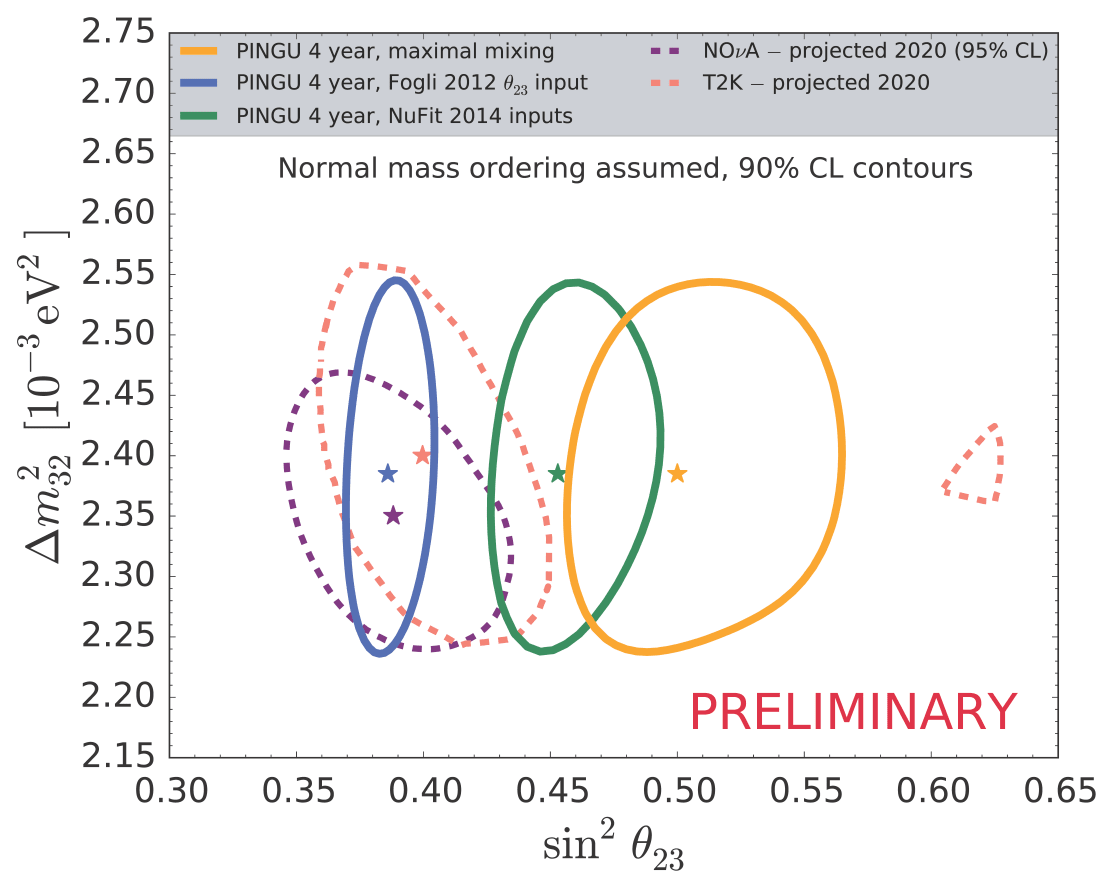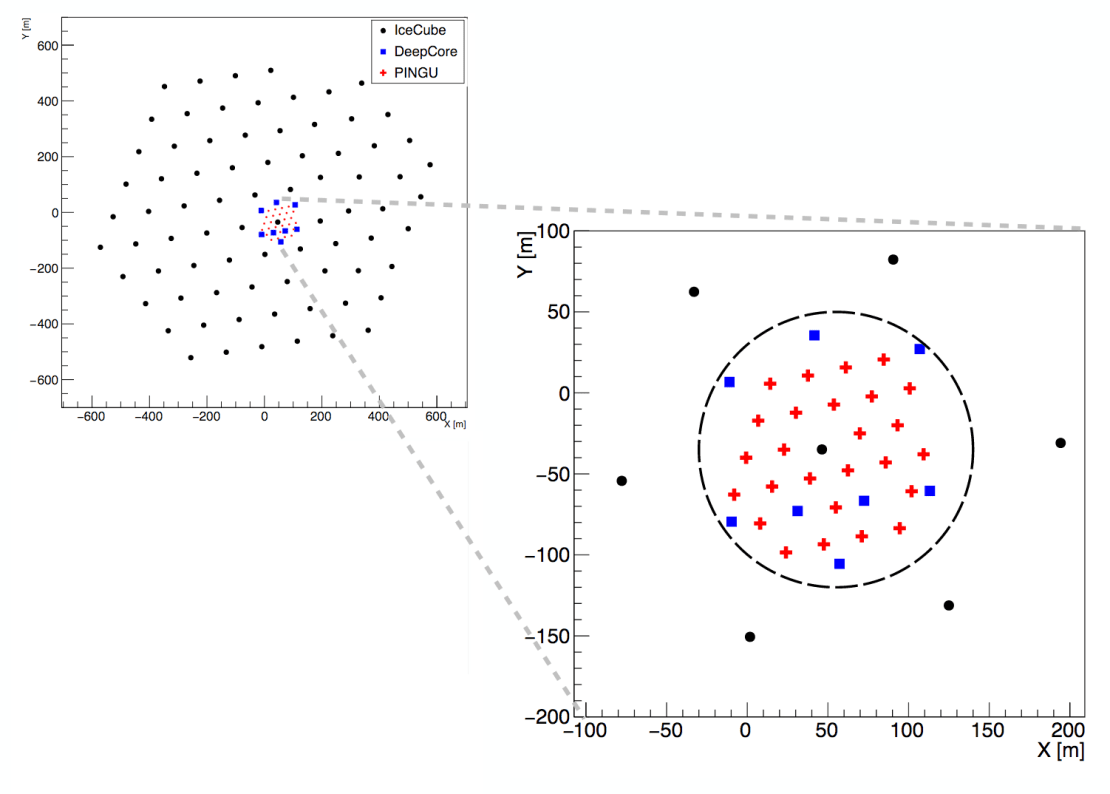IceCube is usually presented as the world’s largest neutrino detector. And it is. But IceCube is much more, it is a multipurpose instrument detecting neutrinos from around 10 GeV to PeV and above. Thus, IceCube is also a particle physics detector playing a leading role in neutrino physics.
As IceCube data is continually analyzed to advance our understanding of neutrino astronomy and physics, scientists are already thinking about the future. And when talking about neutrino oscillations, dark matter searches, supernova neutrino bursts, or probing the composition of the Earth’s core, GeV-scale neutrinos become our most desired particles.
The Precision IceCube Next Generation Upgrade (PINGU) is the proposed infill extension in a region at the center of the IceCube Neutrino Observatory that will lower the energy threshold to a few GeV, dramatically increasing both the number of GeV-scale neutrinos detected by IceCube and, more importantly, the precision with which they are measured.

Although PINGU is not a new idea, scientists have now optimized its design, lowering the cost and deployment logistics without compromising its science reach.
PINGU’s new design reduces the number of strings from 40 to 26, allowing the deployment of the full detector in only two polar seasons. However, the number of sensors on each string will increase up to 192, providing a 6 Mton effective mass neutrino detector and improved sensitivity. The new design lowers the cost by over $20 million. Further upgrades to this design, not yet fully explored, could entail using multi-PMT sensors such as the ones currently used in KM3NeT, which could improve sensitivity and resolution while reducing the cost even further.

PINGU will explore neutrino oscillation physics in an energy range not fully explored by long-baseline neutrino beam experiments. Researchers expect to test the maximal mixing hypothesis, i.e., that the third neutrino is composed of exactly equal amounts of muon and tau neutrinos, and determine the mass ordering, i.e., whether the third neutrino is much lighter or heavier than the other two, with a significance of 3 sigma within four years.
PINGU will also greatly advance the measurements of the atmospheric neutrino oscillation parameters, for which the current IceCube configuration has already proven to be very competitive with dedicated neutrino oscillation experiments.
The construction and science outcomes of PINGU require the efficient and successful deployment of a new detector at the South Pole that will build on the previous outstanding experience of IceCube. The instrumentation design, drilling, deployment, and operations are well understood and have already shown to be feasible with enormous success.
The letter of intent presented this week has optimized the design to make PINGU an affordable detector that could be fully operational as early as five years from now. Now that scientists know that this is possible, they are also exploring how far the scientific program could go. “Best of all, PINGU will use a fundamentally different technique to study this type of physics, which makes it a vital cross-check on measurements made by other neutrino experiments,” explains Ty DeYoung, a researcher at Michigan State University and one of the members of the IceCube-Gen2 Collaboration leading the work on PINGU. “There are many theories of new physics that could be tested by comparing PINGU observations to those made by other experiments—indeed, that might be the only way to test some of these theories,” adds DeYoung.
The detection of lower energy neutrinos will expand IceCube searches for dark matter annihilation as well as develop a new tomographic probe of the Earth’s composition using matter effects on neutrino oscillations. Also, the increased number of sensors will enhance the sensitivity to the low-energy neutrinos created by supernova bursts.
The PINGU Collaboration is already working on a more comprehensive document, which will be available in the near future.
+ info “PINGU: A Vision for Neutrino and Particle Physics at the South Pole,” IceCube-Gen2 Collaboration: M. G. Aartsen et al. Journal of Physics G 44 (2017) 5, DOI:10.1088/1361-6471/44/5/054006, arxiv.org/abs/1607.02671